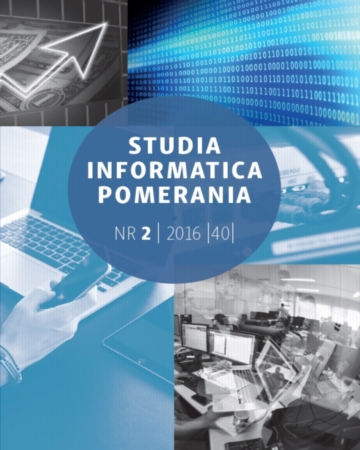
ISSN: 2451-0424
eISSN: 2300-410X
OAI
DOI: 10.18276/si.2017.44-04


Issue archive /
nr 44
INSPIROWANA I SPONTANICZNA EDUKACJA KONEKTYWNA W INTERNETOWYM ŚRODOWISKU UCZENIA SIĘ
(INSPIRED AND SPONTANEOUS CONNECTIVE EDUCATION IN INTERNET LEARNING ENVIRONMENT)
| Authors: |
Anna
Stolińska
Uniwersytet Pedagogiczny w Krakowie |
| Keywords: | connectivism learning theory digital age internet learning environment |
| Data publikacji całości: | 2017 |
| Page range: | 10 (33-42) |
Abstract
The article presents the problem of organizing the learning process based on the new philosophy of education – connectivism taking as the example students of University of Cracow. The author of this concept think that a new learning theory is required, due to the huge growth information available on the Internet and new possibilities for people to communicate on global networks. The article presents selected aspects of connectivity, discusses the results of the author’s own research and presents an analysis of the resulting conclusions.
Download file
Article file
Bibliography
| 1. | Belmonte, V., Grossi, M.G.R. (2010). Virtual Learning Environments: An Overview of Brazilian Production. Pobrano z: http://www.abed.org.br/congresso2010/cd/ing/2942010181132.pdf (10.04.2016). |
| 2. | Downes, S. What Connectivism Is. Pobrano z: http://halfanhour.blogspot.com/2007/02/what-connectivism-is.html (2.03.2017). |
| 3. | Duke, B., Harper, G., Johnston, M. (2013). Connectivism as a Digital Age Learning Theory. The International HETL Review, Special Issue, 4–13. |
| 4. | Ertmer, P.A., Newby, T.J. (2013). Behaviorism, Cognitivism, Constructivism: Comparing Critical Features from an Instructional Design Perspective. Performance Improvement Quarterly, 26 ( 2), 43–71. DOI: 10,1002/piq.21143. |
| 5. | Frankowski, M. Czy konektywizm jest szansą polskiej edukacji? Pobrano z: http://www.cen.uni.wroc.pl/Pliki/ Wydawnicza/21_wybrane_teksty/06_fanki.pdf (2.03.2017). |
| 6. | Guerin, C., Carter, S., Aitchison, C. (2015). Blogging as Community of Practice: Lessons for Academic Development? International Journal for Academic Development, 20 (3), 212–223. DOI:10.1080/1360144X.2015.1042480. |
| 7. | Moore, J.L., Dickson-Deane, C., Galyen, K. (2011). e-Learning, Online Learning, and Distance Learning Environments: Are They the Same? Internet and Higher Education, 14, 129–135. DOI: 10.1016/j.iheduc.2010.10.001. |
| 8. | Pulak, I. (2010). Personal Learning Environment w praktyce, czyli jak zaprojektować własne cyfrowe środowisko kształcenia. W: J. Morbitzer (red.), Człowiek, media, edukacja (s. 255–231). Kraków: Katedra Technologii i Mediów Edukacyjnych, Uniwersytet Pedagogiczny w Krakowie. |
| 9. | Siemens, G. Connectivism: A Learning Theory for the Digital Age. Pobrano z: http://www.itdl.org/journal/jan_05/article01.htm (2.03.2017). |
| 10. | Transue, B.M. (2013). Connectivism and Information Literacy: Moving From Learning Theory to Pedagogical Practice. Public Services Quarterly, 9 (3), 185–195. DOI: 10.1080/15228959.2013.815501. |
| 11. | Verhagen, P. Connectivism: A New Learning Theory? Pobrano z: https://pl.scribd.com/doc/88324962/Connectivism-aNew-Learning-Theory (11.02.2017). |